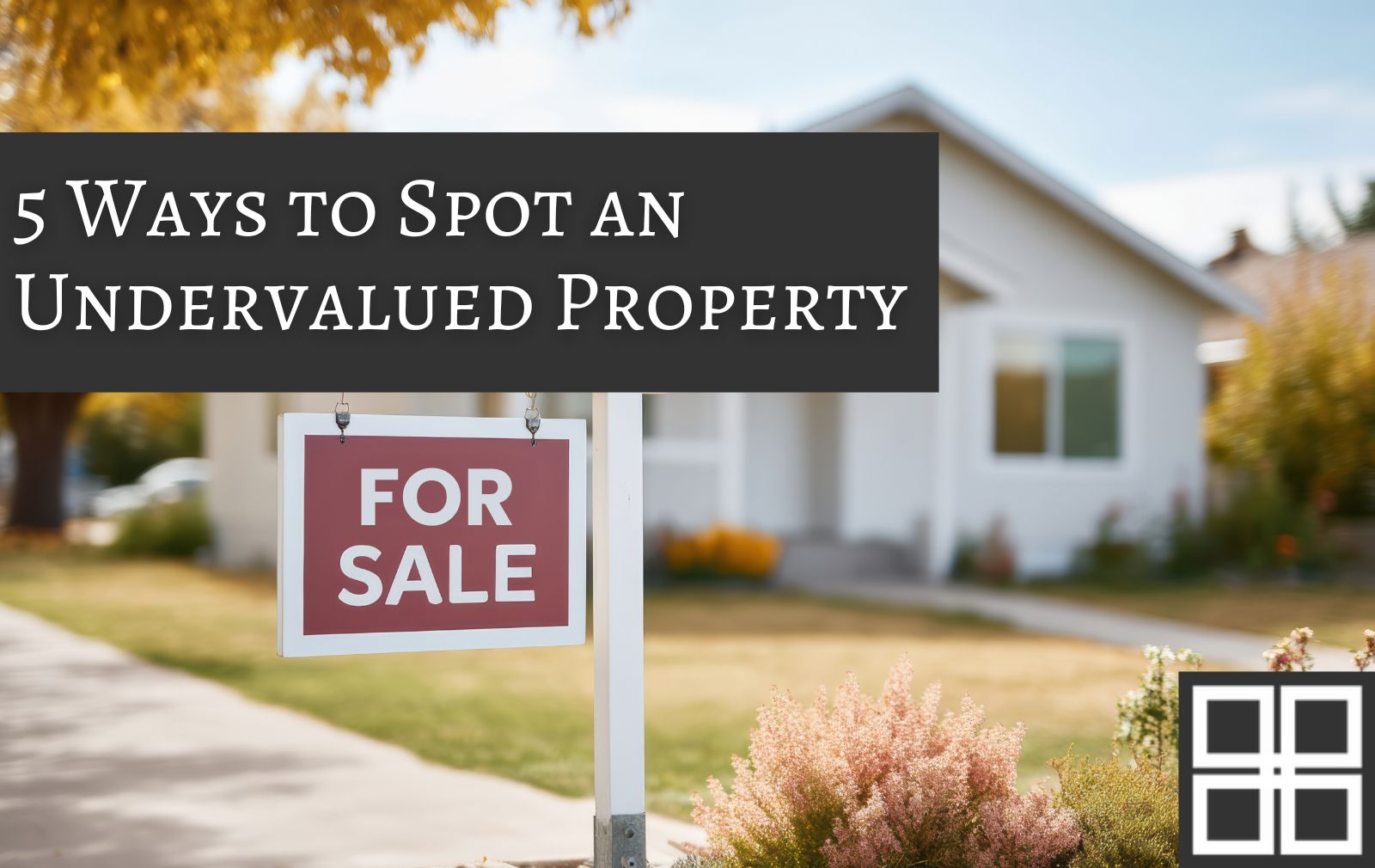5 Ways to Spot an Undervalued Property: Tips for Savvy Investors
For real estate investors, spotting an undervalued property is like striking gold. These hidden gems offer the chance to build equity quickly, generate strong rental returns, or flip for profit—without overpaying upfront. But identifying an undervalued home isn’t just about hunting for the cheapest listing on the market. It requires a keen understanding of local trends, seller behavior, and market dynamics.
Let’s break down exactly what makes a property undervalued, how to recognize key signals that others might miss, and where savvy investors should be looking. We’ll also explain why working with the right real estate agent can give you a serious edge when it comes to uncovering great deals before the competition does.
1. What Makes a Property Undervalued?
Not all low-priced homes are good investments—and not all good investments are priced low at first glance. A truly undervalued property is one that’s priced below what it’s actually worth, whether due to seller circumstances, market timing, or overlooked potential. Here are some of the most common reasons a property might fly under the radar:
Market Mispricing
Sometimes homes are simply listed too low—often due to outdated comps, inexperienced sellers, or agents unfamiliar with the local market. This can create opportunities to snatch up a deal before prices catch up.
Motivated Sellers
Owners going through a major life change—like divorce, relocation, or estate liquidation—may be more interested in a fast sale than maximizing price. Their urgency can translate into below-market deals for investors ready to act.
Cosmetic, Not Structural, Flaws
Properties for sale that look rough on the surface (think outdated paint, worn carpets, overgrown yards) can scare away retail buyers. But if the structure is sound, these homes offer excellent potential with minimal rehab investment.
Transitional Neighborhoods
Areas on the edge of growth—those seeing new businesses, improved infrastructure, or shifting demographics—often have homes that are still priced like the “old neighborhood.” Getting in early can yield major long-term upside.
2. Key Indicators to Look For
Once you know what makes a property undervalued, the next step is recognizing those signs in the wild. While some red flags might signal trouble, other “signals” are green lights for savvy investors. Here’s what to keep your eye on:
Days on Market (DOM)
If a home has been sitting on the market significantly longer than similar properties in the area, it could indicate a pricing mismatch or a cosmetic issue that’s turning off typical buyers. This is often a perfect time to negotiate a better price—especially if the seller is growing impatient.
Price Per Square Foot Discrepancies
Compare the price per square foot to recent sales nearby. If a listing is priced notably lower than the neighborhood average, it may be undervalued—or at least worth investigating. This metric is especially helpful in uniform neighborhoods or condo complexes.
Rental Income Potential
For buy-and-hold investors, check the potential rental yield and cap rate. A property that produces solid rental income relative to its purchase price—even if it doesn’t look like a deal at first glance—can be undervalued from a cash flow perspective.
Telltale Language in Listings
Phrases like “priced to sell,” “as-is,” or “seller motivated” can suggest that a deal is possible. While some of these properties might need work, they’re also the ones where you can add the most value post-purchase.
Tax Assessments vs. Listing Price
Compare the county’s assessed value and previous sale history to the current asking price. If the listed price is significantly below assessed value or what the property sold for just a few years ago, it may be worth a closer look.
3. Where and How to Find Undervalued Properties
Knowing what to look for is one thing—finding these hidden opportunities is another. Here are some of the best strategies to uncover undervalued properties before the crowd catches on:
Watch the MLS Closely
Even standard listings can become deals if you monitor them carefully. Look for price reductions, stale listings, and properties that fall out of contract and come back on the market. Set up alerts with a savvy agent to catch changes the moment they happen.
Look for Off-Market Deals
Some of the best opportunities never hit Zillow or Realtor.com. Off-market properties—also known as “pocket listings”—often surface through investor networks, direct outreach, or local agents with strong community ties.
Explore Auctions and Foreclosures
While these require more due diligence and may carry risk, properties sold at auction or foreclosure can be significantly undervalued. If you’re an experienced investor or working with someone who is, this route can yield excellent returns.
Drive for Dollars
Yes, the old-school method still works. Driving through transitional neighborhoods and noting vacant or neglected homes can lead to direct-to-owner opportunities. A bit of legwork can uncover deals before they’re listed.
Partner with a Well-Connected Agent
Here’s where the Heather Murphy Group shines: A seasoned agent with deep market knowledge and investor experience can guide you to properties with hidden potential, access off-market inventory, and help you move quickly when the right opportunity arises.

4. The Importance of Working with the Right Real Estate Agent
Even seasoned investors can miss great opportunities without the right support. Working with a real estate agent who truly understands your investment goals—and knows how to spot potential others overlook—can make all the difference.
Here’s what a top-tier real estate professional brings to the table:
- Early Access to Deals: Well-connected agents often know about properties before they hit the market, giving you a valuable head start.
- Local Market Knowledge: Understanding neighborhood trends, school zones, zoning shifts, and redevelopment plans is crucial to assessing value—and that insight comes from experience.
- Investment Savvy: An agent who specializes in working with investors can help you run the numbers, compare ROI potential, and avoid costly pitfalls.
- Skilled Negotiation: Whether you’re up against multiple offers or trying to bring a price down, an agent with negotiation expertise is your secret weapon.
5. Final Tips for Savvy Investors
Before you dive into your next deal, keep these final pointers in mind:
- Always Inspect: Even “as-is” homes need an honest assessment. Bring in a professional inspector to identify issues that could impact ROI.
- Crunch the Numbers: Know your ARV (after-repair value), renovation budget, and holding costs before making an offer.
- Stay Objective: Investment is a numbers game. Fall in love with the potential return, not the property itself.
- Be Patient, Be Ready: Undervalued homes don’t last long—so while it’s wise to wait for the right deal, make sure your financing and strategy are lined up when it arrives.
Conclusion: Ready to Spot Your Next Deal?
Finding undervalued properties isn’t about luck—it’s about strategy, timing, and working with people who understand the market from the inside out. Whether you’re a first-time investor or expanding your portfolio, aligning with the right team can help you secure deals others overlook.
Looking for hidden real estate opportunities in Savannah or the surrounding area?
The Heather Murphy Group has the tools, insight, and local expertise to help you find, evaluate, and secure smart investments.
Contact us today to start your next successful deal.










